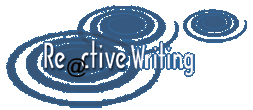Q. What first attracted you to writing hypertext fiction?
It was there
and a challenge. I'd tried in some other media, HyperCard stuff, but it
never really clicked. Either the story lines were too ambitious... everything
happening in Manhattan Kansas in a day in 1844, and again in 1877 and
again in 1903... it was just too big. I also tried a series of poems about
turtles. Each poem ended in a choice which lead to one of two other poems.
The number of files and links soon got unmanageable... and then there
was the question of the content. I tried to make poems about turtles funny.
They weren't.
Q. 253 does not have a story line in the traditional sense of the word. Do you think hypertext fiction has to break away from traditional concepts to be effective in this new form?
Sure do.
I'm not
sure the word is effective, though. Justified is more like it. Why waste
time and energy if the same thing could be done in print?
Basically, the most effective format for interactive fiction is the games.
In fact, I'd say a good game is more involving than a novel. The motivation
level is so high and so potent: are you going to survive, are you going
to get a high score. About the only reader motivation that 253
shares with a good game is curiosity: where do we go next?
Q. What
was the main concept behind basing the story on the tube?
I always
had an idea for a tube novel, but for a long while I thought it would
be a kind of disaster movie thing. You know, the train has no driver and
can't stop and they have 44 minutes before the end of the line to solve
the problem... pretty low grade idea, except that what interested me about
it from the beginning was the difference and variety of all those people
on the tub train. Who were they? What were they doing there? Where are
they going? That basic core is from years ago.
What I think
happened is simple; I lived long enough and lived in London long enough
to begin to have enough information to write about everyone in a tube
train.
It still helps if whoever is reading it has felt the same kind of curiosity. It's hardly Star Wars in terms of universal appeal, but I hope that it has a little bit of everything.. love.. death... some funny moments... some hidden pain... to keep interest going.
Q. What
are the main advantages and disadvantages to writing a hypertext piece
as opposed to a linear paper based story?
It's twice the work. You write it, then you encode it, then you test it, then you upload it and then the image map doesn't work and nobody can tell you why. It's like writing the book, typesetting it, printing it and delivering it to a few tiny book shops in your own van.
Comments about this or any other Reactive Interview can be addressed to the editor L J Winson via email at leo@innotts.co.uk
Geoff Ryman can be contacted at: Ryman.Worksltd@btinternet.com while 253 can be found at http://www.ryman-novel.com/

